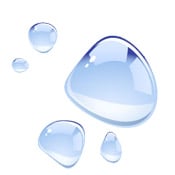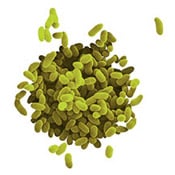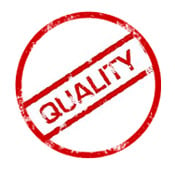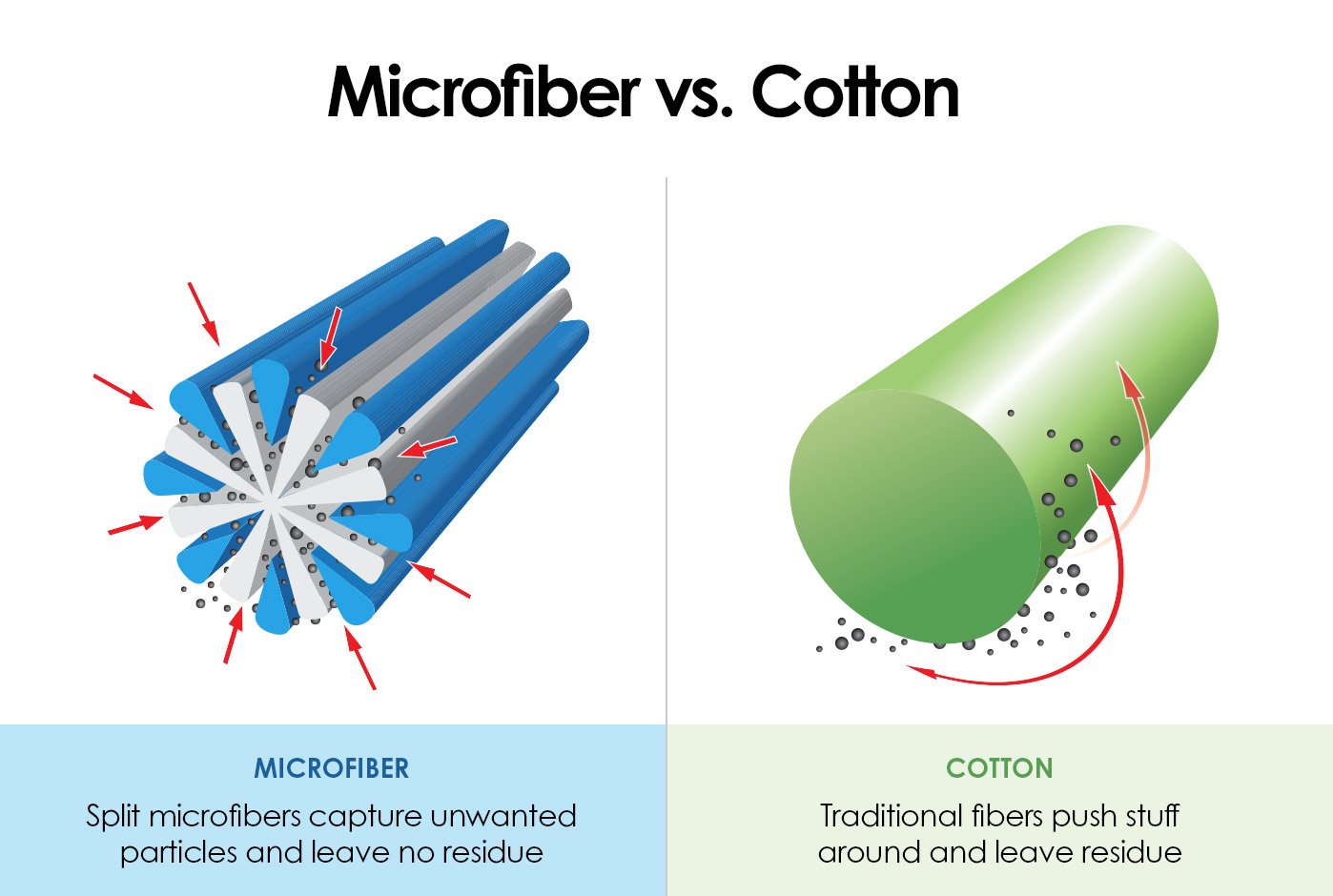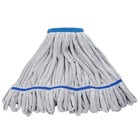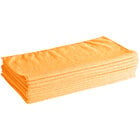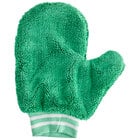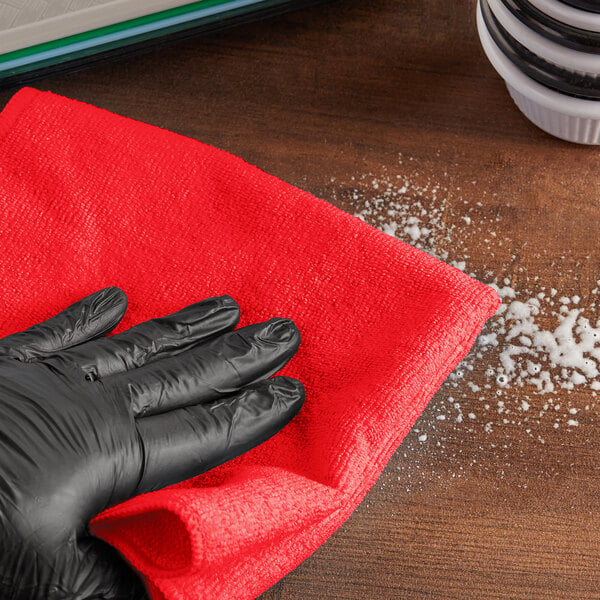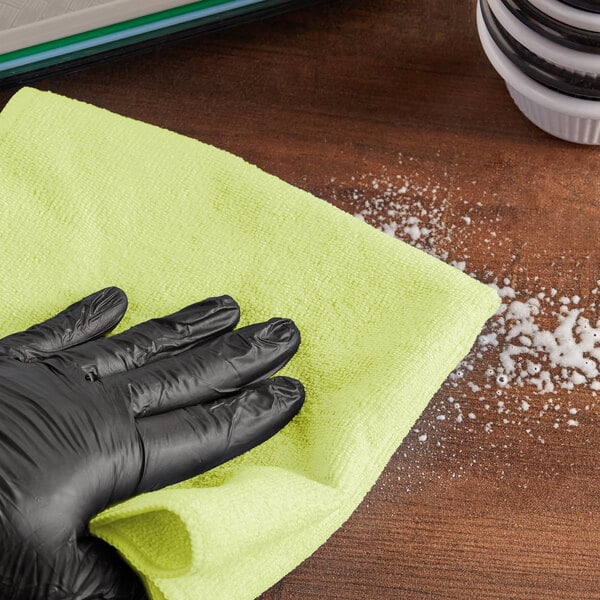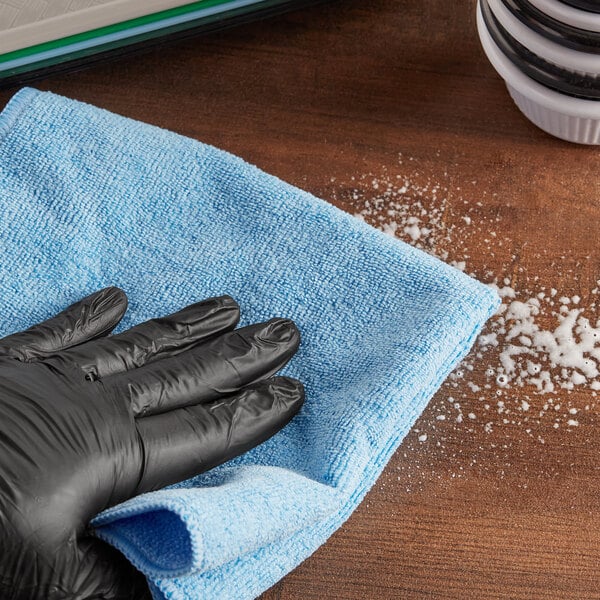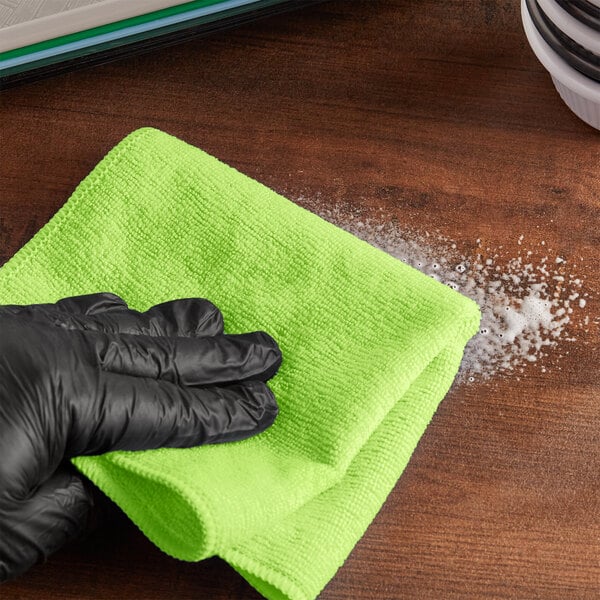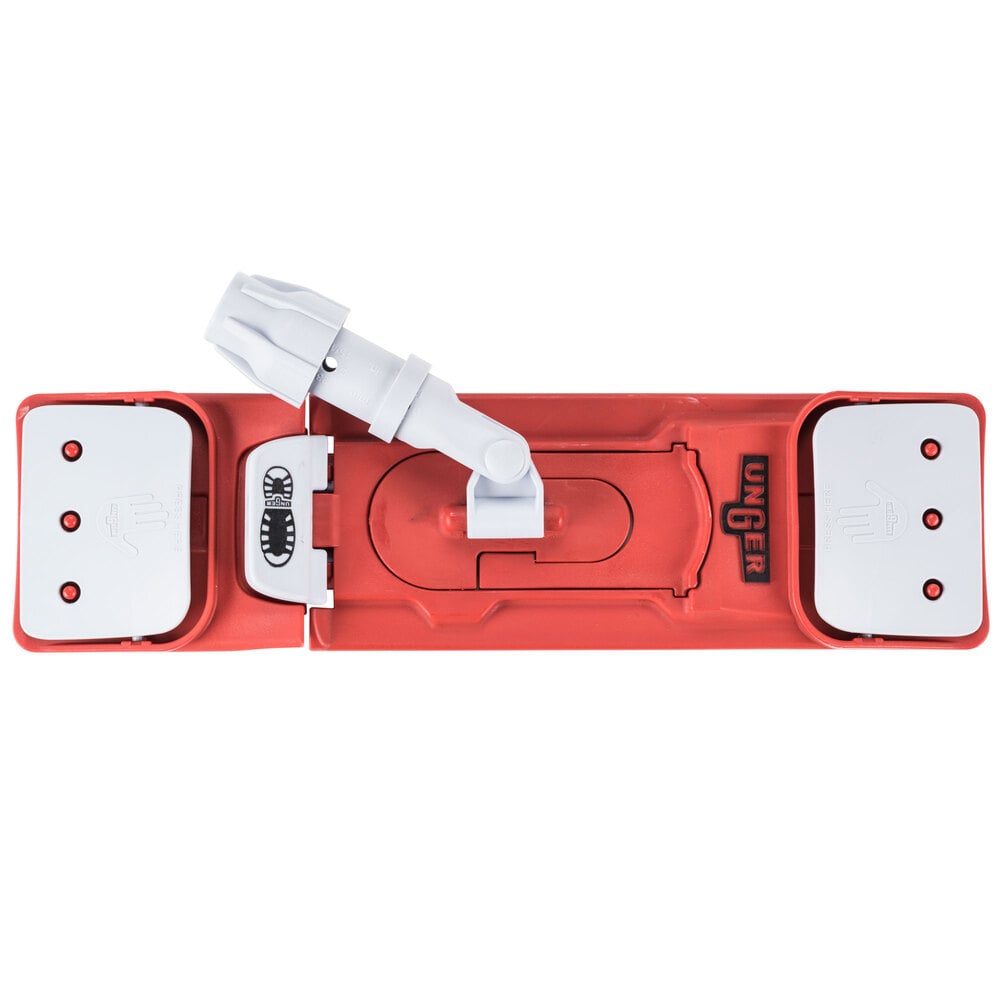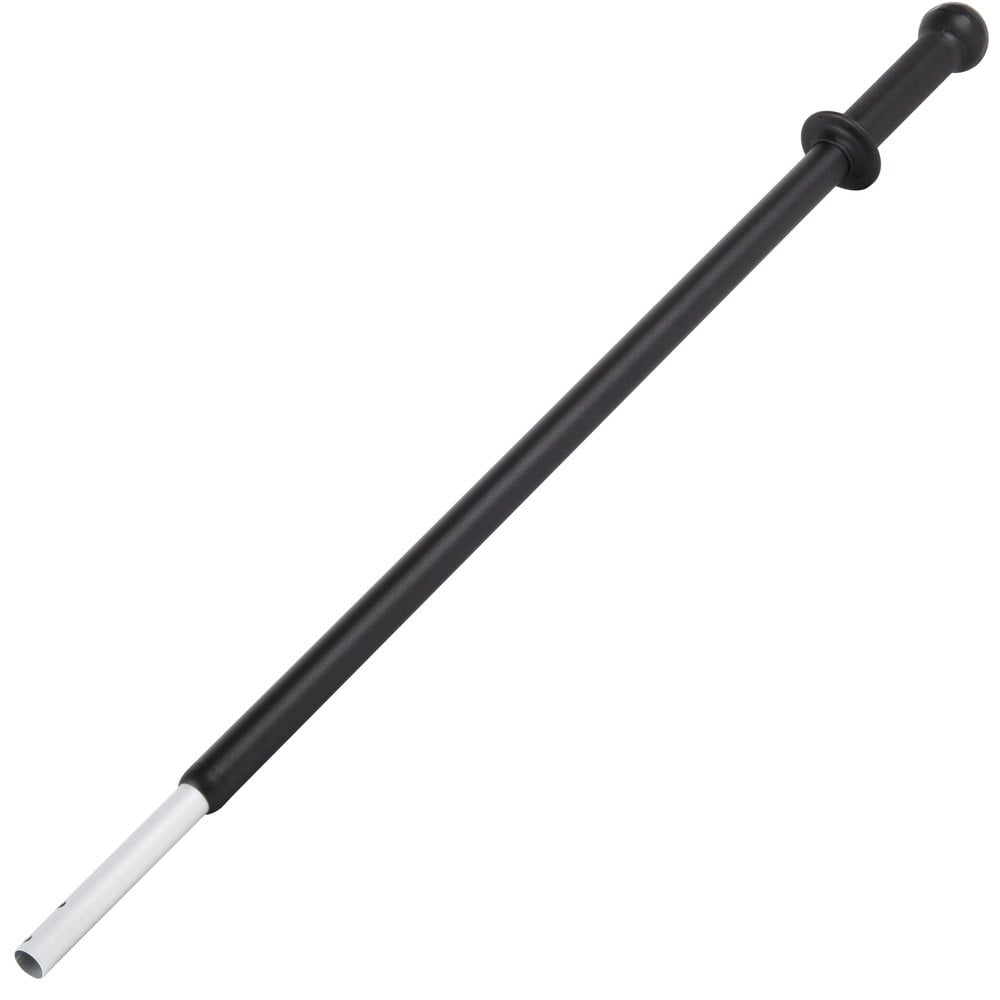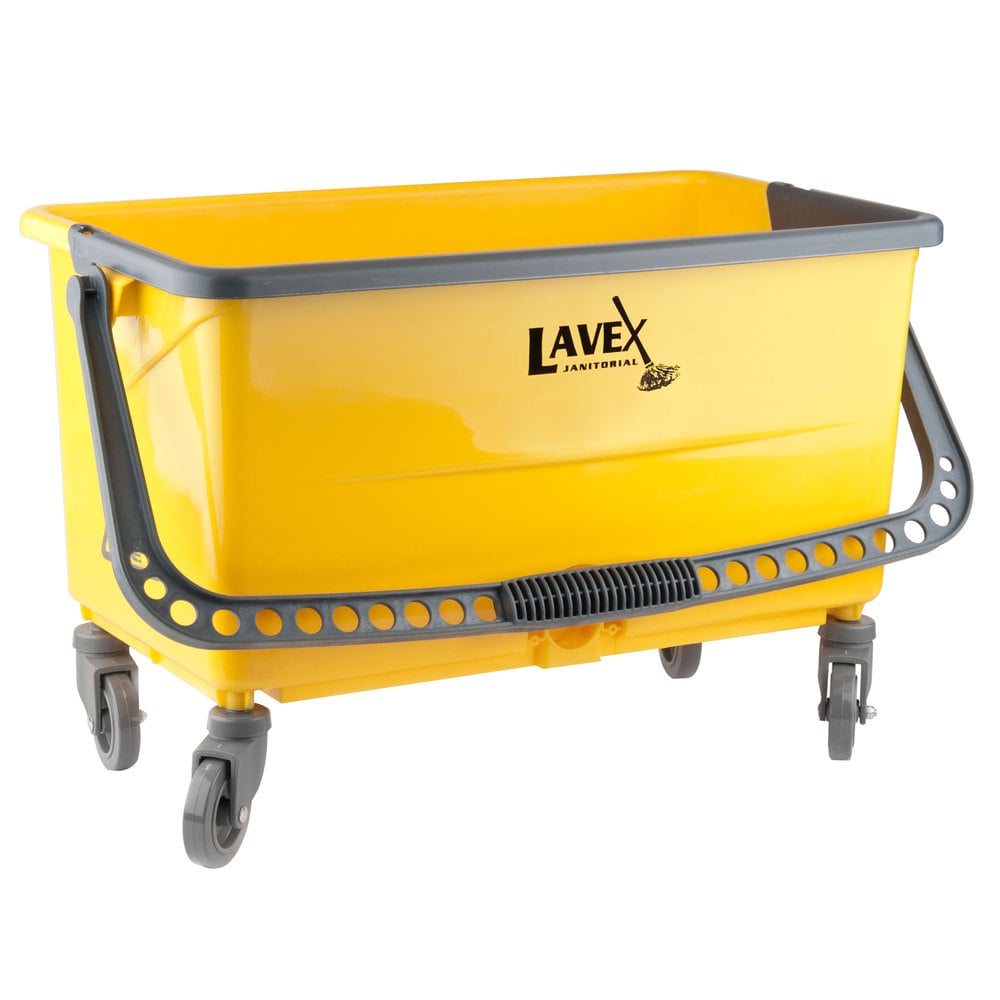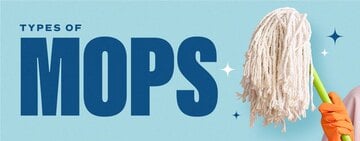Ultra Absorbent
Microfiber products can absorb up to seven times their weight in water due to their high density and surface area. Cleaning up spills is simple with a microfiber mop because it reduces the amount of water and chemicals needed to clean up a mess. Plus, because microfiber is lighter compared to cotton, microfiber mops give your back a break when mopping floors.
Cost Effective
Once a microfiber product is soiled, simply throw it in the wash! Most microfiber cloths, mops, and pads can withstand over 500 uses (use then launder), as long as you don't clean with or wash it with bleach or fabric softener. Bleach will break down the material more quickly. Microfiber material also lasts longer than cotton, meaning you don't have to buy microfiber cleaning cloths as often as cotton cleaning cloths.
Pathogen Prevention
Pathogens, bacteria, and viruses will "stick" to a microfiber cloth or mop head until they're laundered out, which is a plus for hospitals, daycare operations, retirement communities, and restaurant kitchens. Unlike cotton products, microfiber is made of inorganic materials, ensuring that pathogens have nothing to feed on!
Improved Cleaning
Since microfibers soak up more water and trap more dirt, many users find that they don't need to use nearly as much cleaning product and water to get the job done. Because of this efficiency, cleaning jobs take less time and less labor. From mopping floors to polishing metal, microfiber products cut back on chemicals, time, and grime. When washing, be mindful that fabric softener clings to and coats the microfiber and it won't clean surfaces as well or rinse as thoroughly.
Environmentally Friendly
Because microfiber items help you save on the amount of time and product needed to clean, you'll use less water and harsh chemicals! Using a wet microfiber cloth to clean mirrors and counters saves on paper towels. Plus, recycled plastic products are often used to produce microfiber products, which in turn, can be recycled when sent to companies that repurpose them.




